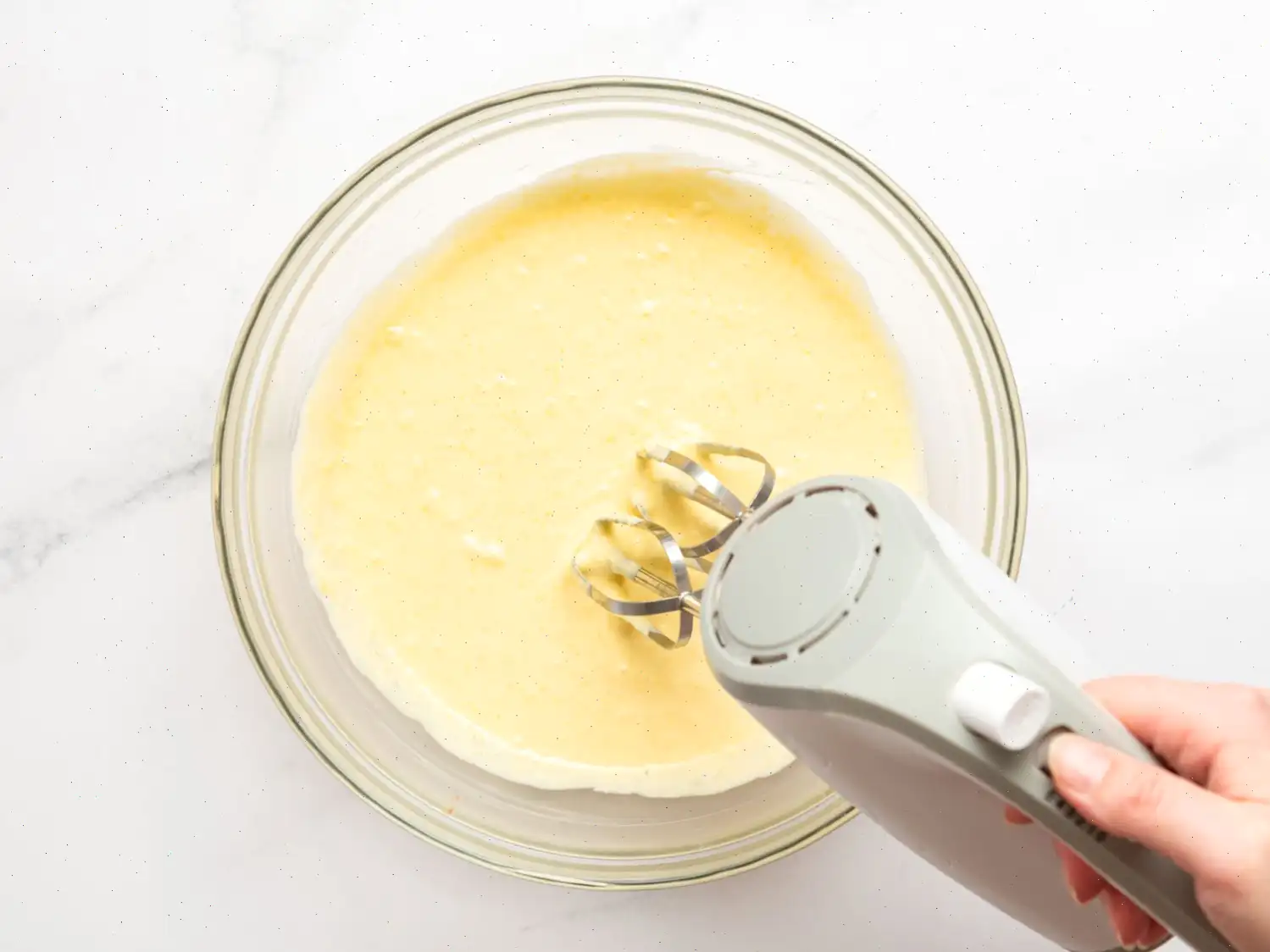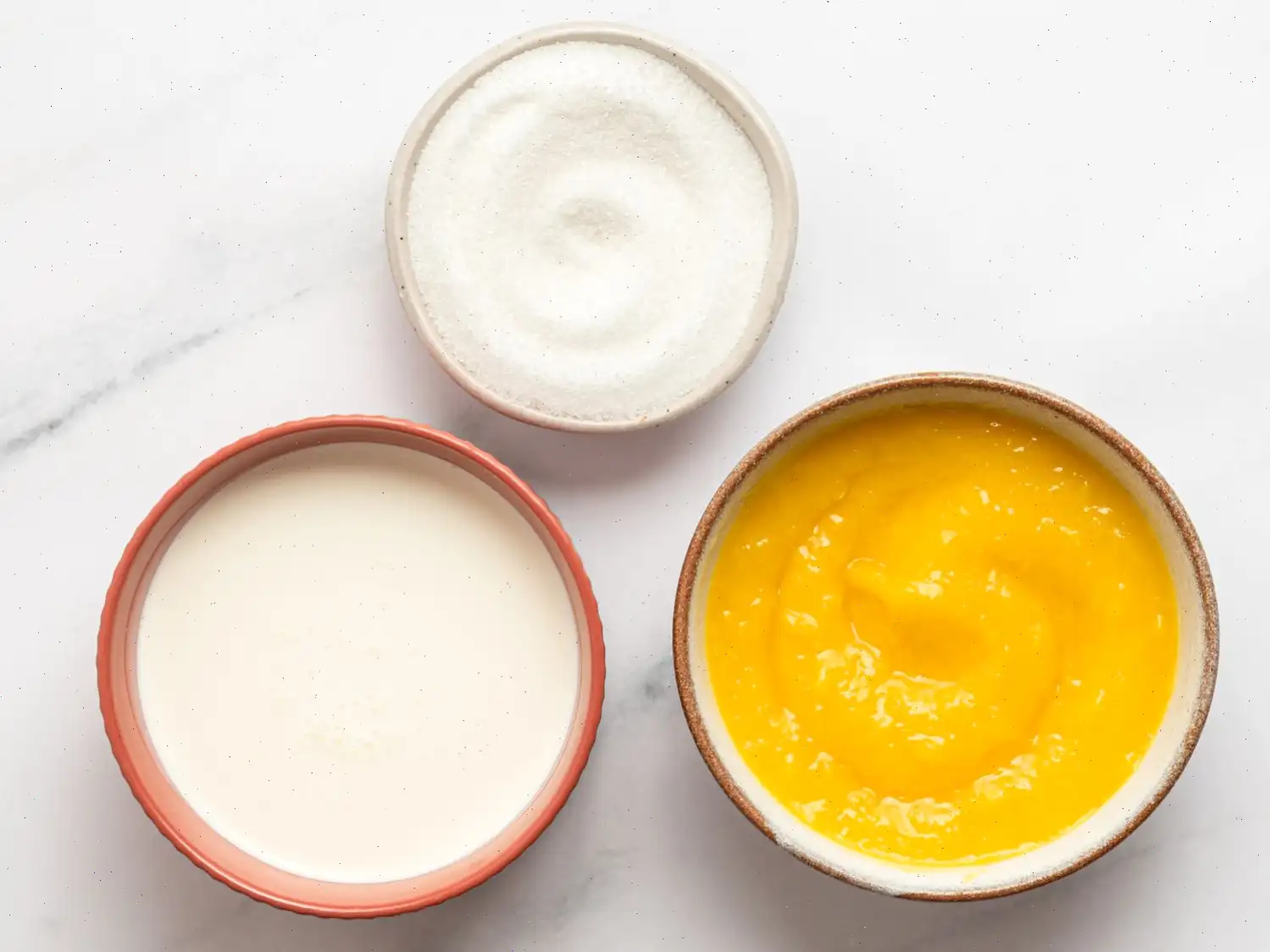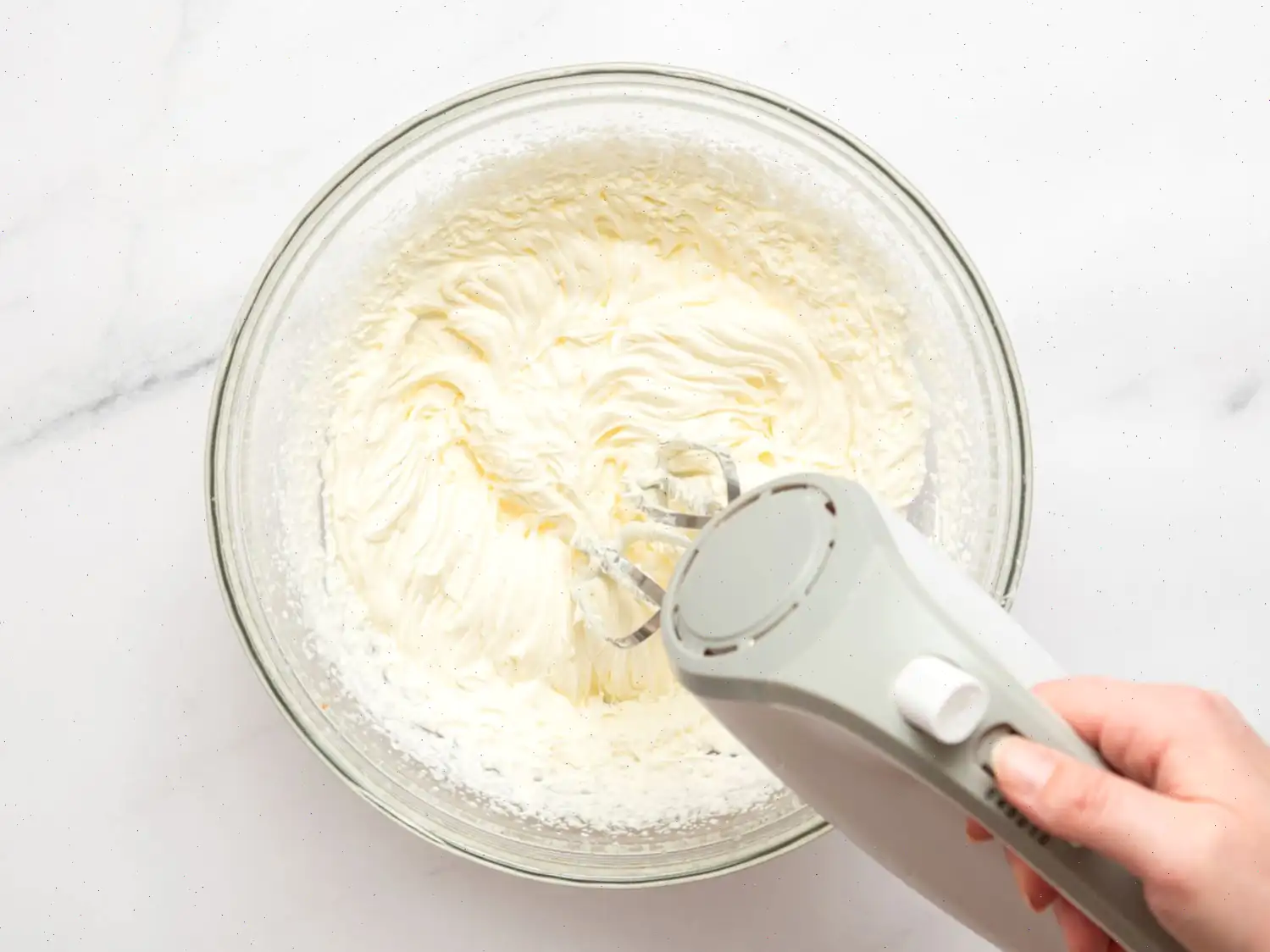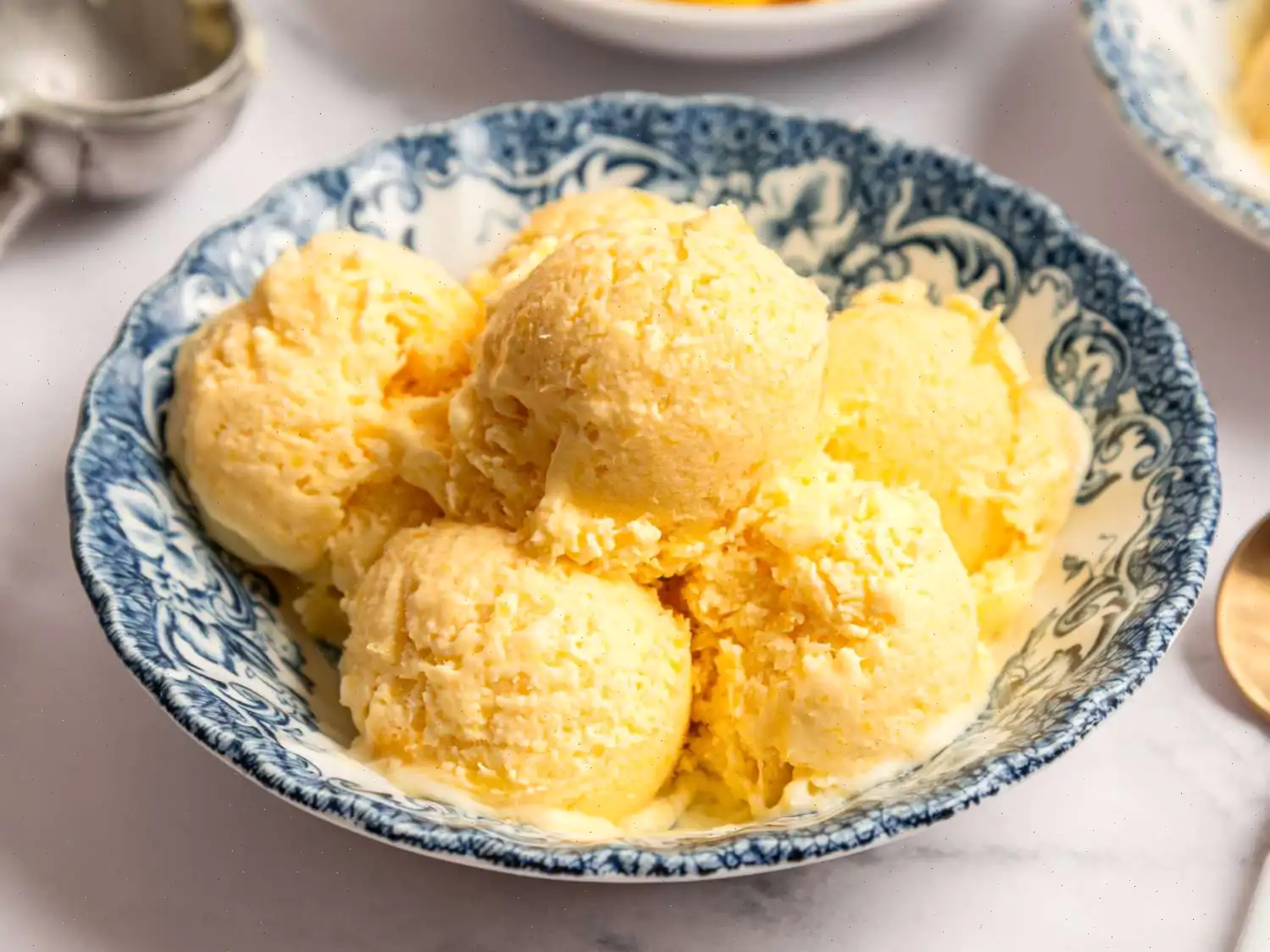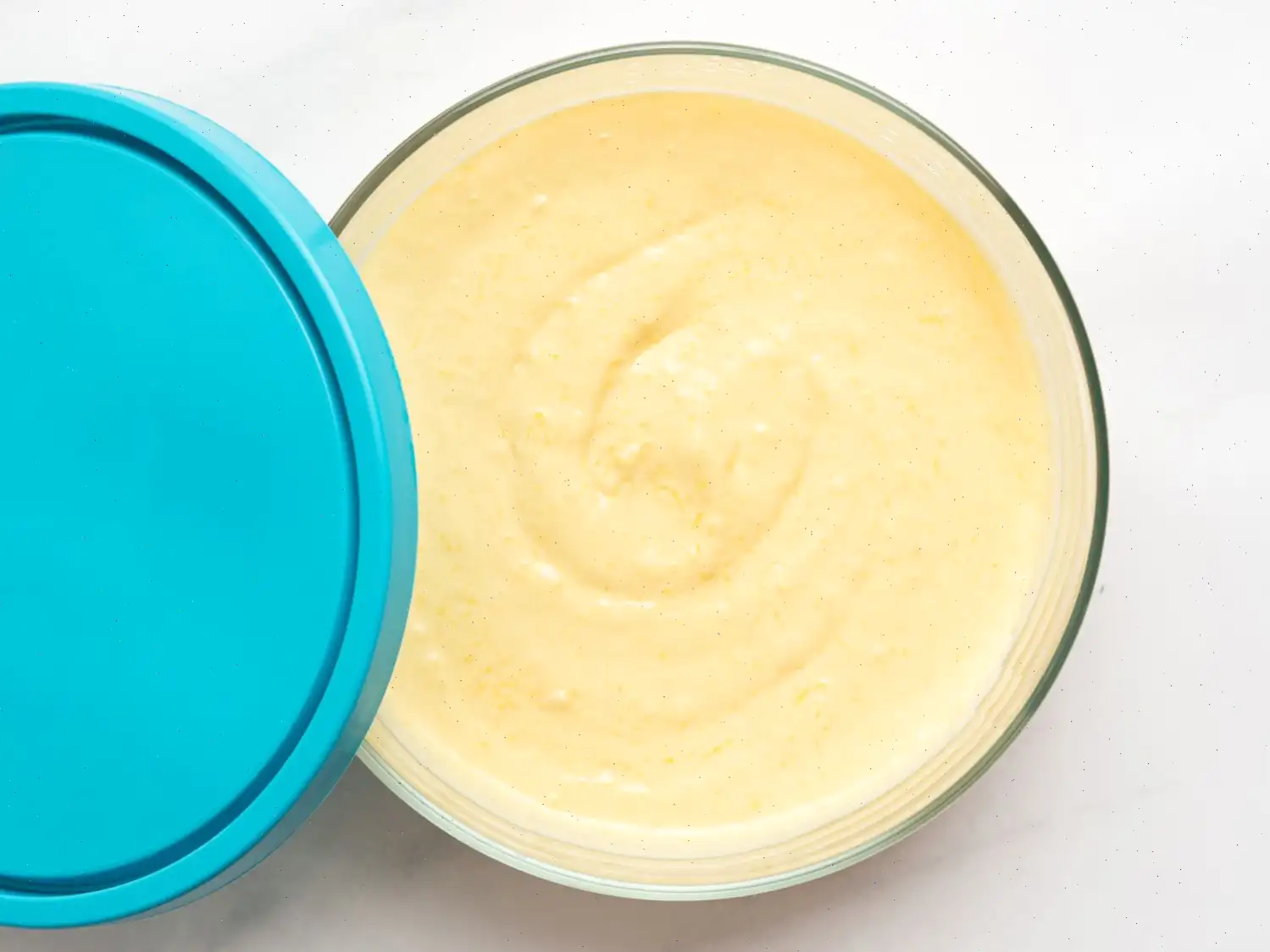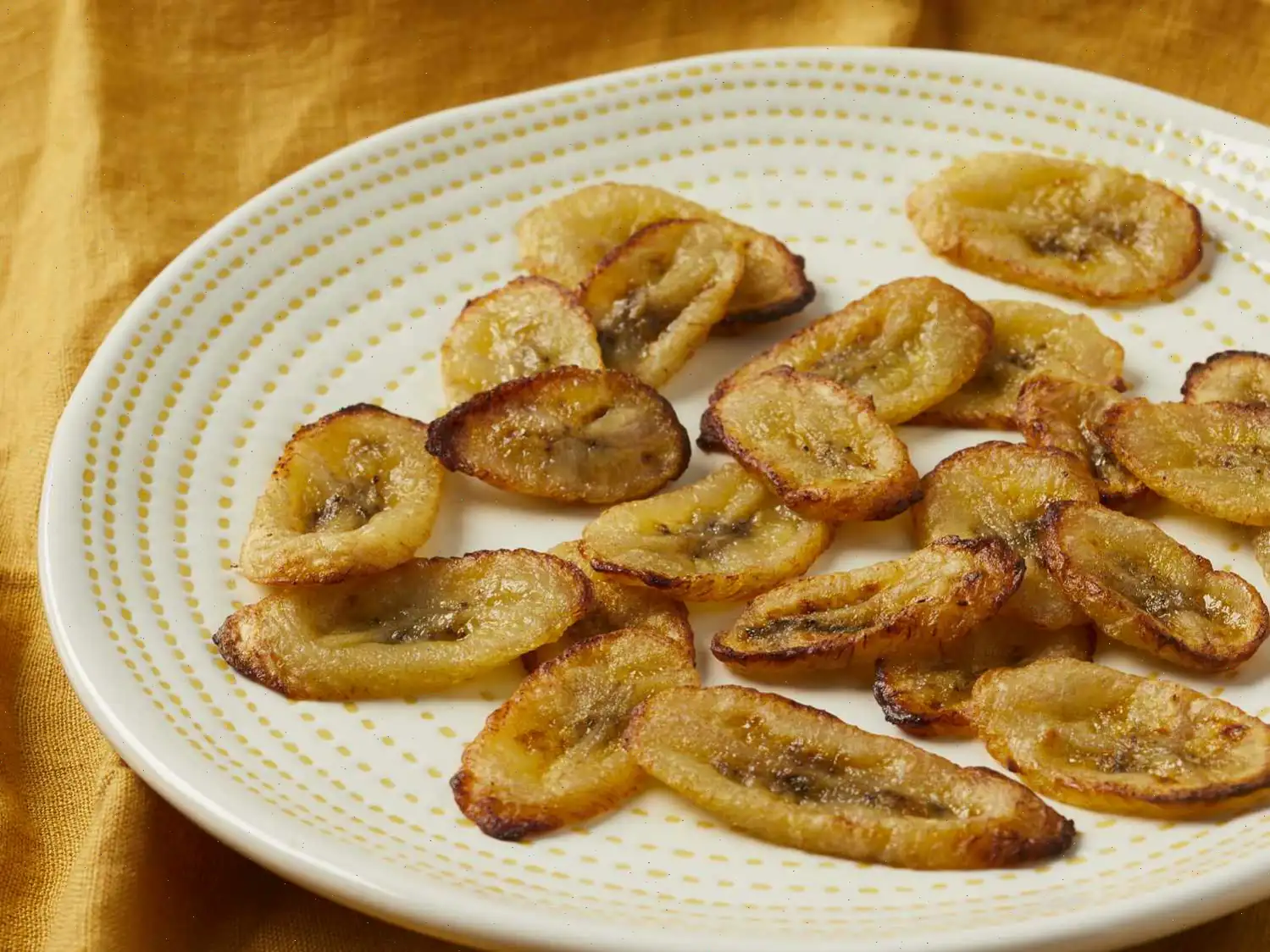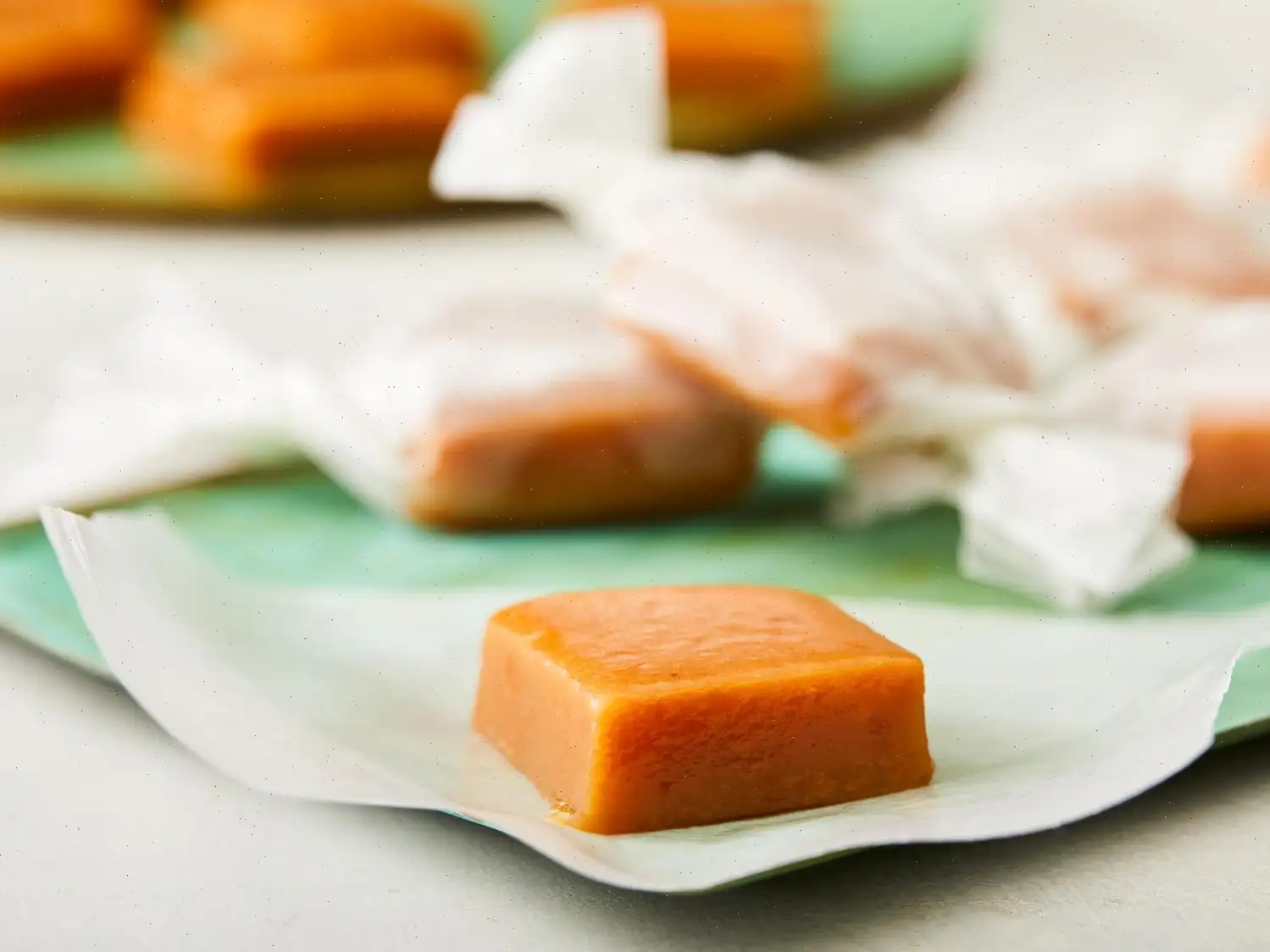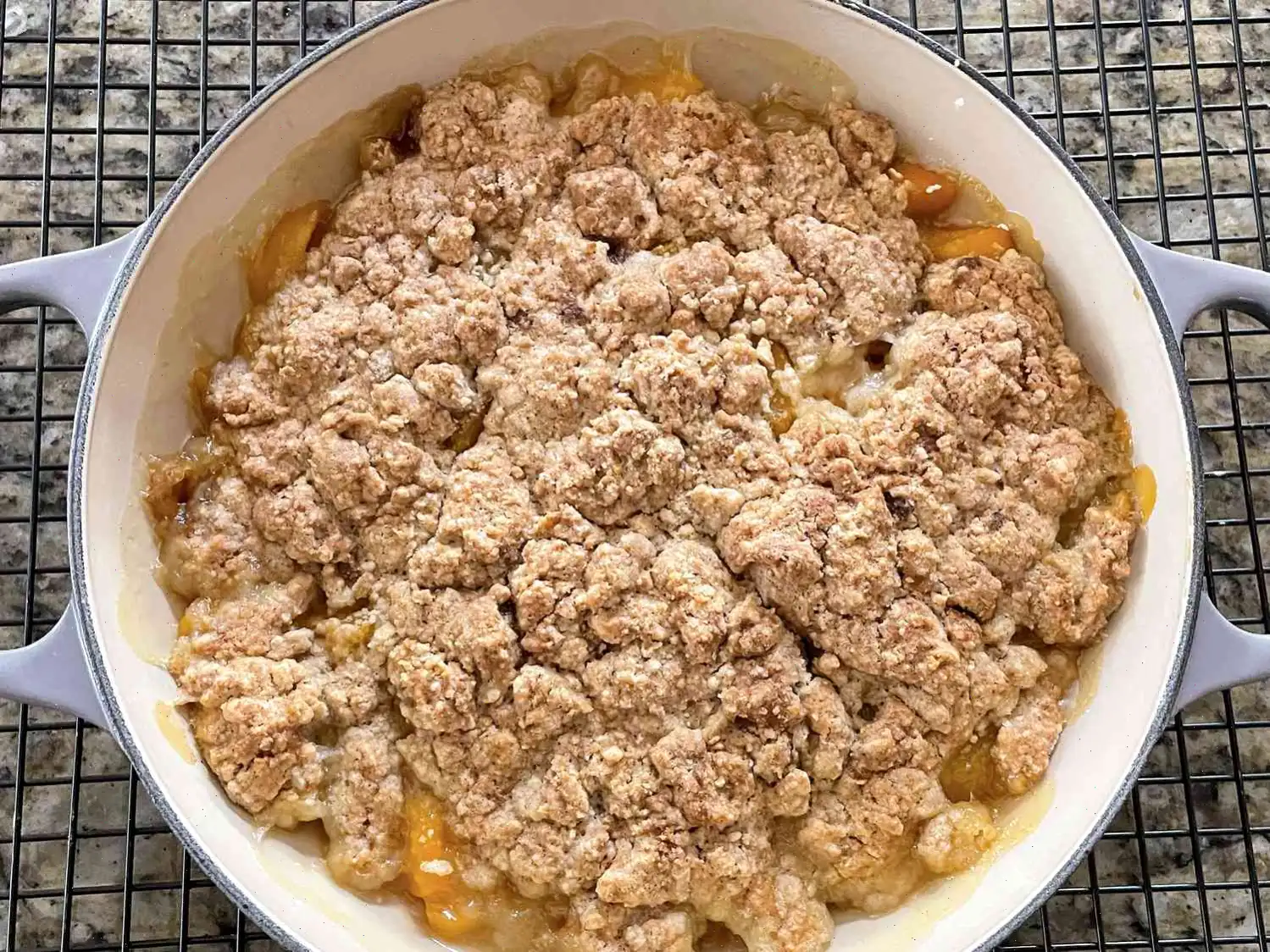
Mango Ice Cream Recipe
Ingredients
- 1 cups mango puree
- 1 cup heavy cream
- cup white sugar
Directions
Step 1: Peel and dice the mangoes. Place them into a blender and blend until smooth, then measure out 1 cups of mango puree. Set it aside and refrigerate any leftover puree for another use.
Step 2: In a large bowl, whip the heavy cream and sugar together using an electric mixer on high speed until soft peaks form.
Step 3: Reduce the mixer speed to low and gently mix in the prepared mango puree until fully incorporated.
Step 4: Pour the mixture into a freezer-safe bowl and place it in the freezer. Freeze for 8 hours or overnight.
Step 5: When ready to serve, remove the ice cream from the freezer and let it sit for 8 to 10 minutes or until it softens enough to scoop.
Cook's Note
You will need about 4 mangoes to get 1 cups of fresh mango puree. If using a Ninja CREAMi, pour the mango puree into the Ninja CREAMi and freeze for 24 hours. The next day, insert the pint into the outer bowl of the Ninja CREAMi following the manufacturers instructions. Press the Ice Cream button and process according to the instructions.
Nutrition Facts (per serving)
- Calories: 149
- Total Fat: 7g (10% DV)
- Saturated Fat: 5g (23% DV)
- Cholesterol: 22mg (7% DV)
- Sodium: 7mg (0% DV)
- Total Carbohydrate: 21g (8% DV)
- Dietary Fiber: 2g (5% DV)
- Total Sugars: 18g
- Protein: 1g (2% DV)
- Vitamin C: 34mg (38% DV)
- Calcium: 25mg (2% DV)
- Iron: 0mg (1% DV)
- Potassium: 187mg (4% DV)
* Percent Daily Values are based on a 2,000 calorie diet. Your daily values may be higher or lower depending on your calorie needs.
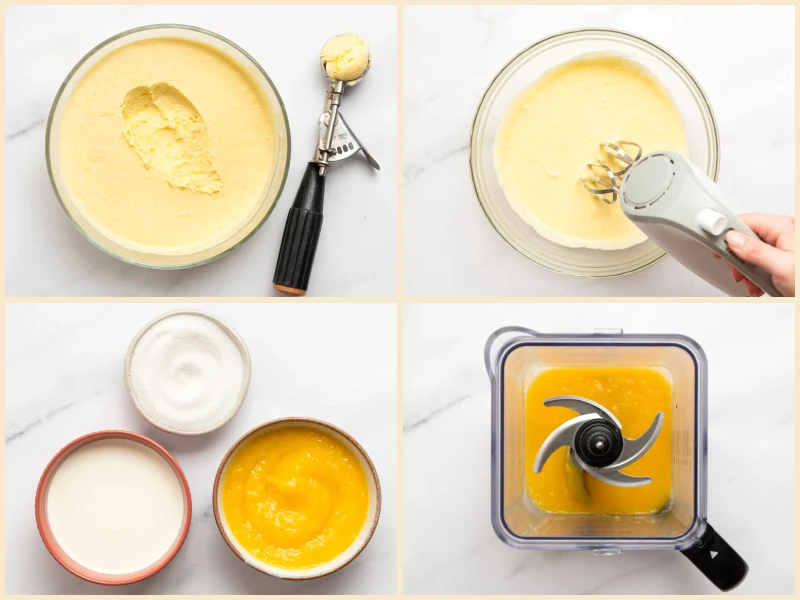

History of Mango Ice Cream
Mango ice cream is a beloved treat in many parts of the world, particularly in tropical regions where the mango fruit is abundant. Originating from South Asia, mangoes are considered the "king of fruits" and have been enjoyed for thousands of years. The history of mango ice cream is believed to have been influenced by the Indian tradition of making frozen desserts, known as "kulfi," which dates back to the Mughal era in the 16th century. However, the modern version of mango ice cream, as we know it today, is thought to have been popularized during the colonial period when Western-style ice cream gained traction across India and Southeast Asia.
Regional Features of Mango Ice Cream
Mango ice cream is particularly popular in countries with a warm tropical climate, such as India, Thailand, the Philippines, and Mexico. In India, it is often made using mango pulp from local varieties like Alphonso, which is considered one of the sweetest mango varieties in the world. The creamy texture and rich flavor of mango ice cream make it a favorite dessert in many households, street food stalls, and high-end restaurants across the subcontinent. In other parts of the world, variations of mango ice cream can include coconut milk or condensed milk to enhance the tropical flavor.
What Sets Mango Ice Cream Apart?
While mango ice cream shares similarities with other fruit-flavored ice creams, its distinct, vibrant flavor and creamy texture set it apart. Unlike lemon or strawberry ice creams, which can have a tart taste, mango ice cream's natural sweetness and smooth, velvety consistency make it a luxurious treat. The use of ripe, juicy mangoes gives the ice cream a unique tropical flavor, and the ice creams bright orange color often makes it instantly recognizable. Furthermore, many mango ice cream recipes are made without eggs, which helps maintain a lighter, fresher taste compared to traditional custard-based ice creams.
Where is Mango Ice Cream Typically Served?
Mango ice cream is often served as a dessert in both casual and formal settings. In India, it can be found at wedding receptions, festivals like Diwali, and family gatherings. In the Philippines, it is commonly served alongside other desserts during summer festivals. Internationally, this dessert is a staple in tropical beach resorts and restaurants that focus on fresh, local ingredients. Mango ice cream can also be a refreshing addition to fruit salads or enjoyed as a topping for pancakes and waffles.
Fun and Interesting Facts About Mango Ice Cream
- Mangoes are not only delicious but also packed with nutrients. They are rich in Vitamin C, fiber, and antioxidants, which contribute to the fruits health benefits.
- The Alphonso mango, which is often used to make mango ice cream in India, is sometimes referred to as the king of mangoes due to its superior taste and aroma.
- Mango ice cream became popular worldwide through the spread of tropical flavors during the 20th century, as people began to experiment with exotic fruits in Western-style desserts.
- In some countries, such as Thailand, mango ice cream is served with sticky rice, creating a sweet and savory combination that has become a local delicacy.
- The mango season in India typically runs from April to July, so it is during these months that the freshest mangoes are used to prepare ice creams and other mango-based desserts.
Mango ice cream continues to be a versatile and beloved dessert that appeals to a wide range of palates, making it a perfect treat for any occasion.
FAQ about Mango Ice Cream Recipe
Comments
Kathleen King
01/24/2024 08:43:35 PM
I absolutely adore how simple it was to prepare this recipe. No ice cream machine required, just a few basic ingredients, and the end result was wonderfully creamy and packed with flavor!
Andrew Allen
07/16/2024 06:32:34 AM
Delicious! My family absolutely adored it. I simply reduced the amount of sugar slightly. I will definitely be making this again.
Carol Scott
05/24/2023 12:15:19 PM
Incredible recipe!



